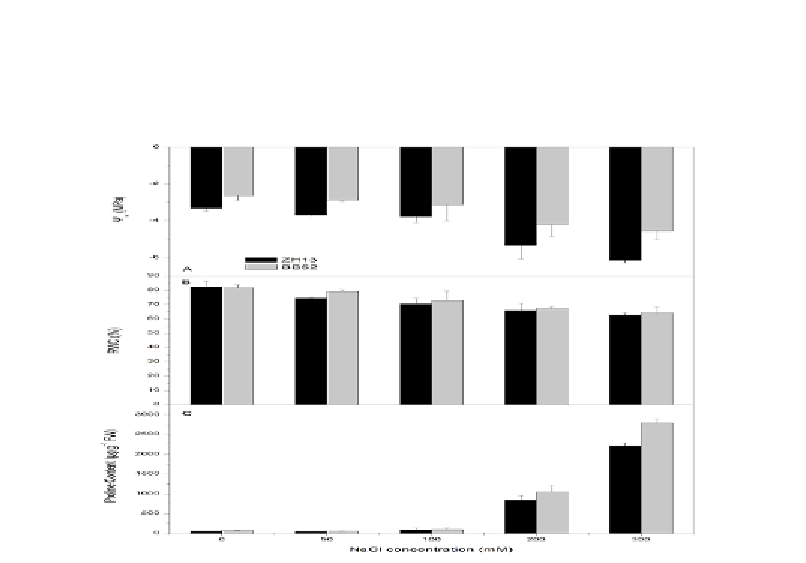Environmental Engineering Reference
In-Depth Information
ratio (Figure 5D) also decreased in leaves and roots of two varieties with increasing salinity.
Compared with ZH13, BB52 maintained a significantly higher K
+
/Na
+
ratio, especially in
leaves.
Figure 4. Changes of water potential (ψw, A), relative water content (RWC, B) and proline content (C)
in different NaCl treatments.
4.
D
ISCUSSION
Salt stress can limit the growth and photosynthesis of plants and even lead to their death.
The results of our experiment indicated that salt stress significantly inhibited the growth of
ZH13 and BB52. However, BB52 grew better and ZH13 could not survive in 300mM NaCl.
This indicates that the salt tolerance of BB52 is stronger and the difference might be ascribed
to their different salt tolerance mechanisms.
As a sensitive physiological process, photosynthesis is closely related to the growth of
plants under salt stress.
Previous studies on photosynthesis s indicated that photosynthetic rate (Pn) under salt
stress often decreased and the reduced Pn was attributed to stomatal limitation or non-
stomatal limitation [17-21]. Whether stomatal or non-stomatal factors are the main cause of
the reduced Pn can be judged by the changing patterns of Gs and Ci [22]. If both Gs and Ci
decreased simultaneously, Pn is mainly limited by stomatal conductance, but if Gs decreased
while Ci increased or kept constant, the reduced Pn is mainly ascribed to non-stomatal factors
[23]. In our study, the photosynthesis rate in ZH13 and BB52 was negatively affected by salt
stress and the main limiting factor for reduced Pn was not constant under different
concentration salt stress. With the increase from 50mM to 200mM of the NaCl concentration,
the decrease of Pn was mainly caused by the reduced stomatal conductance. However, the

